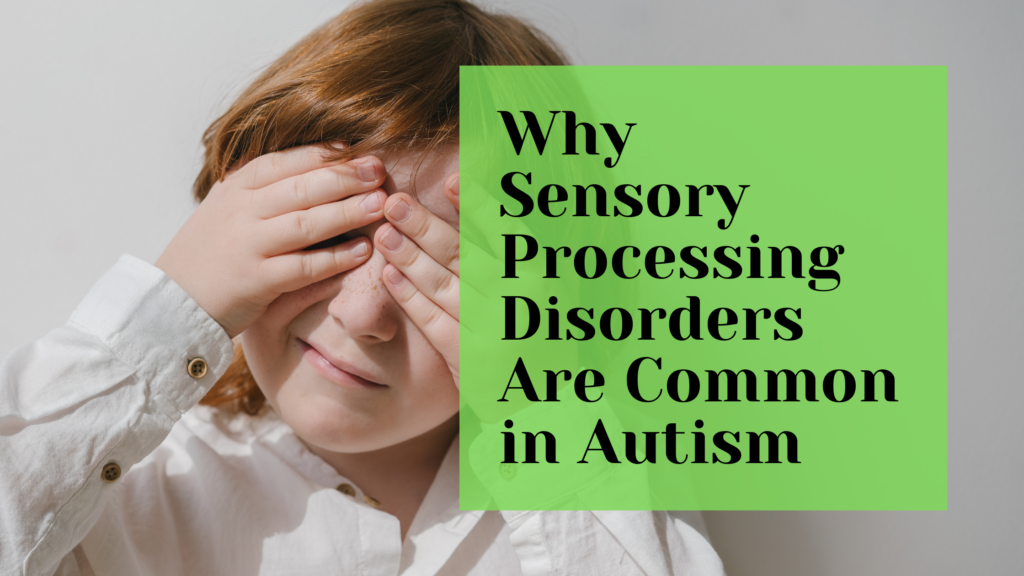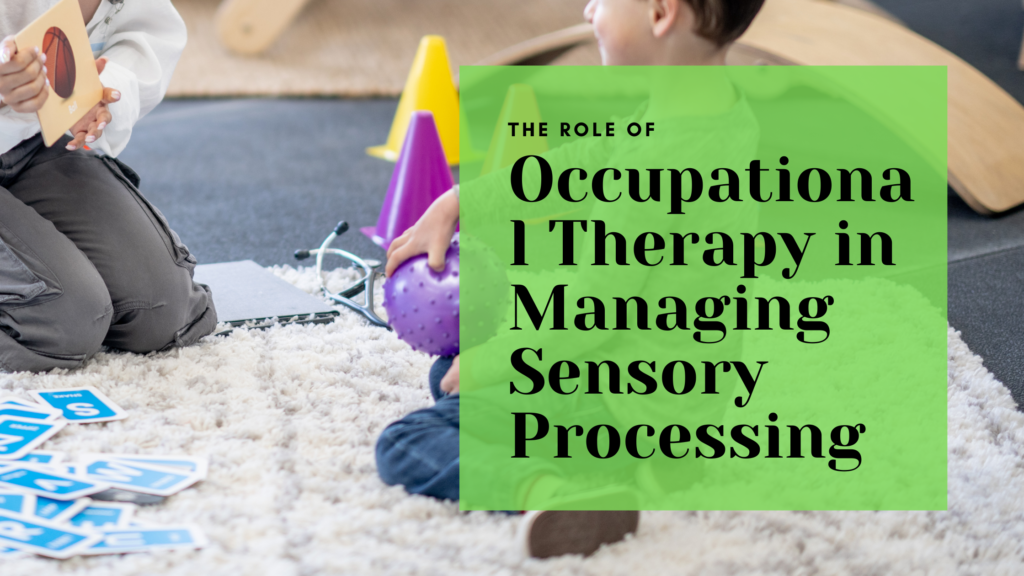I. Introduction
Autism spectrum disorder (ASD) is a developmental condition that affects how individuals perceive and interact with the world around them. People with autism may experience differences in communication, behavior, and social interaction. Sensory processing issues are also very common in individuals with autism, impacting about 90% of those diagnosed. These sensory issues can include sensitivity to sounds, lights, textures, and even smells, making daily life more challenging.
The goal of this article is to provide practical strategies to help individuals with autism manage their sensory processing difficulties and improve their daily lives. By understanding sensory triggers, creating sensory-friendly environments, and utilizing effective tools and therapies, caregivers and families can make a significant difference in the quality of life for those dealing with autism-related sensory issues.
This article will explore the basics of sensory processing in autism, common challenges, identifying triggers, and helpful strategies such as sensory integration techniques, tools, and coping strategies. By offering simple, actionable advice, this guide aims to be a resource for families, caregivers, and educators supporting individuals with autism.
II. Understanding Autism and Sensory Processing Issues
Sensory processing disorder (SPD) refers to the brain’s difficulty in receiving and responding to information from the senses. While SPD can exist independently, it is closely linked to autism. Individuals with autism often experience challenges in how they process sensory input, making them either overly sensitive (hypersensitivity) or under-sensitive (hyposensitivity) to stimuli like noise, touch, or light.
Hypersensitivity means the person is overwhelmed by sensory input. For example, a person may cover their ears in a noisy environment because the sound is unbearable to them. On the other hand, hyposensitivity refers to a reduced response to sensory stimuli. For example, some individuals may not notice pain or crave more intense physical sensations, such as seeking out deep pressure or movement.
These sensory processing difficulties can impact daily life in numerous ways, making simple tasks, like getting dressed or attending school, overwhelming. Understanding these sensory differences is the first step in helping individuals with autism navigate the world more comfortably.
III. Common Sensory Challenges in Individuals with Autism
Individuals with autism often experience sensory sensitivities related to various senses. For instance, they may find:
- Noise: Loud or unexpected sounds can be painful or frightening.
- Light: Bright or flickering lights, like fluorescent bulbs, can cause discomfort or distraction.
- Touch: Certain fabrics or textures might feel unbearable against their skin.
- Smell: Strong scents, like perfumes or cleaning products, can be overwhelming.
In addition to sensitivities, many individuals with autism also display sensory-seeking behaviors, where they crave intense sensory input. This might include activities like jumping, spinning, or pressing their bodies against objects for deep pressure. These behaviors are ways of self-regulation and can help balance sensory input in those with hyposensitivity.
These sensory challenges often become more noticeable in everyday environments such as home, school, or public spaces. A trip to the grocery store, for example, can be an overwhelming experience, with bright lights, loud noises, and strong smells triggering sensory overload. Understanding these challenges helps in managing them better.
IV. Identifying Sensory Triggers
Recognizing specific sensory triggers is crucial in helping individuals with autism cope with sensory challenges. Triggers vary from person to person and may include sounds, textures, lights, or smells. Caregivers and educators can observe behaviors that indicate distress or discomfort, such as covering ears, withdrawing from situations, or displaying signs of agitation when exposed to certain stimuli.
Sensory assessments, either conducted by a therapist or through careful observation, can provide valuable insights. These assessments help pinpoint what stimuli cause discomfort or overload. Once triggers are identified, tailored strategies can be developed to minimize their impact, such as using noise-cancelling headphones or adjusting lighting to create a more comfortable environment.
V. Creating a Sensory-Friendly Environment
A sensory-friendly environment is key to helping individuals with autism manage their sensory needs. Whether at home, school, or public spaces, small adjustments can make a big difference. Here are a few strategies for creating sensory-friendly spaces:
- Noise reduction: Use noise-cancelling headphones or soundproofing techniques to reduce unwanted background noise.
- Lighting adjustments: Opt for soft, natural lighting instead of harsh fluorescent lights. Dimmers or adjustable lighting can also help create a calming atmosphere.
- Calming spaces: Designate a quiet area where individuals can retreat when feeling overwhelmed. This space can include soothing items like soft blankets, pillows, or sensory toys.
Consistency in the environment is also important. Keeping sensory-friendly spaces predictable and organized reduces the chance of sensory overload and provides a sense of security.
VI. Sensory Integration Techniques and Therapies
Sensory integration therapy (SIT) is an effective approach for helping individuals with autism manage sensory input. SIT involves activities designed to improve the brain’s ability to process and respond to sensory information. Through repetitive exposure to controlled sensory experiences, individuals can develop better coping mechanisms and self-regulation.
Another helpful technique is the use of a sensory diet, which includes planned sensory activities throughout the day. These activities help individuals with autism balance their sensory needs, whether it’s calming them down or providing stimulation. Sensory diets are personalized, designed by occupational therapists to fit each person’s unique needs.
Deep Pressure Stimulation (DPS) tools, such as weighted blankets, compression vests, and body socks, can also help individuals with autism manage sensory input. These tools provide a calming effect by applying gentle, consistent pressure, which can soothe sensory overload and help with focus.
VII. Tools and Products to Help with Sensory Issues
Many tools and products can assist individuals with autism in managing sensory challenges. These include:
- Noise-cancelling headphones: Help block out overwhelming sounds in noisy environments.
- Weighted vests and blankets: Provide deep pressure stimulation to calm the nervous system.
- Fidget toys: Useful for sensory-seeking individuals, fidget toys provide tactile stimulation and help with focus.
- Visual aids: Tools like picture schedules or calming visual cues can help individuals anticipate transitions and feel more in control.
- Soft lighting: Using dimmable lamps or soft, ambient lighting can reduce visual overstimulation in the environment.
Selecting sensory products should be based on individual needs and preferences. Consulting with occupational therapists can also help identify the most beneficial tools for each person.
VIII. Coping Strategies for Sensory Overload
When sensory overload occurs, it can be extremely distressing for individuals with autism. Here are some coping strategies that can help manage sensory overload in different environments:
- Quiet zones: Create designated areas at home or school where individuals can retreat to when they feel overwhelmed.
- Portable sensory tools: Items like stress balls or noise-cancelling headphones can be used on the go to help manage sensory input.
- Relaxation techniques: Teach simple deep-breathing exercises or grounding techniques, such as focusing on the senses (e.g., feeling a soft object or listening to calming music) to reduce anxiety during sensory overload.
These strategies can be used across various settings, from home to public spaces, allowing individuals with autism to feel more comfortable and in control.
IX. Incorporating Routines and Structure to Ease Sensory Challenges
Daily routines play an important role in reducing sensory stress for individuals with autism. Predictability and consistency can help them anticipate what’s coming next, reducing anxiety and making transitions smoother. Some helpful tips for establishing structured routines include:
- Consistent sleep schedules: Ensure a regular bedtime routine to promote better sleep, which can significantly impact sensory processing the following day.
- Regular meal times: Predictable eating schedules can help regulate mood and prevent sensory-related meltdowns caused by hunger or changes in routine.
- Smooth transitions: Use visual schedules or timers to signal transitions between activities, making changes less jarring.
Structured routines create a sense of stability, allowing individuals with autism to navigate sensory challenges with greater ease.
X. Support for Caregivers and Families
Caring for a loved one with autism and sensory challenges can be both rewarding and demanding. Caregivers must take care of their own emotional and physical well-being in order to provide the best support. Here are some tips for caregivers:
- Self-care: Take time to rest and engage in activities that rejuvenate you. It’s important to maintain your own health.
- Seek support: Reach out to support groups, either locally or online, where you can share experiences and get advice from others in similar situations.
- Access resources: Professional guidance, such as from occupational therapists, psychologists, and autism specialists, can provide tailored support for managing sensory challenges.
Caregivers who prioritize their own well-being are better equipped to support their loved ones with autism.
XI. Conclusion
Sensory issues are a significant challenge for many individuals with autism, but with the right strategies and tools, their daily lives can be greatly improved. By identifying sensory triggers, creating sensory-friendly environments, and utilizing sensory integration techniques, caregivers can help ease the sensory stress that individuals with autism face. Routine and structure also play key roles in managing these challenges.
Ongoing learning and professional support are essential in finding what works best for each person. With patience, understanding, and the right tools, individuals with autism can navigate the sensory world with more comfort and confidence. Encouraging a proactive approach will make a meaningful difference in their quality of life.
Here’s a table with 10 key points based on the article, including a short description for each:
| # | Key Point | Description |
|---|---|---|
| 1 | Identify Sensory Triggers | Observe behaviors and reactions to pinpoint specific sensory triggers to help develop coping strategies. |
| 2 | Create a Sensory-Friendly Environment | Design spaces with soft lighting, quiet areas, and sensory-friendly materials to reduce sensory overload. |
| 3 | Use Sensory Integration Therapy | Engage in sensory integration therapy with professionals to help balance sensory processing in daily life. |
| 4 | Incorporate a Sensory Diet | Develop a personalized sensory diet of activities to help regulate sensory input throughout the day. |
| 5 | Provide Sensory Tools | Use items like noise-cancelling headphones, weighted blankets, and sensory toys to assist with sensory challenges. |
| 6 | Establish Daily Routines | Consistent daily routines help reduce unpredictability and minimize sensory stress for individuals with autism. |
| 7 | Teach Coping Strategies | Introduce techniques like deep breathing or sensory breaks to manage overload in stressful environments. |
| 8 | Support Caregivers and Families | Offer guidance, self-care resources, and emotional support for caregivers managing sensory issues in loved ones. |
| 9 | Monitor Sensory Sensitivities | Sensory sensitivities can change over time; regularly reassess triggers and adjust strategies accordingly. |
| 10 | Seek Professional Help When Needed | Work with occupational therapists or specialists to create tailored approaches for managing sensory issues. |
This table outlines the core takeaways, offering practical tips that align with the topics covered in your article.


